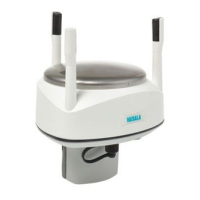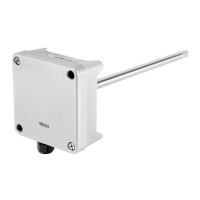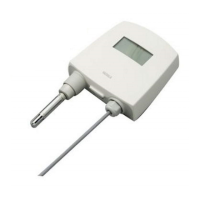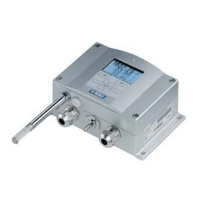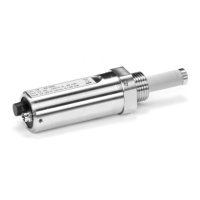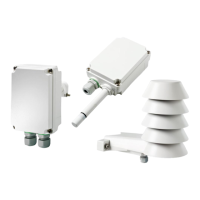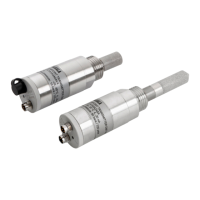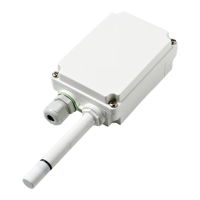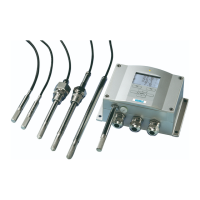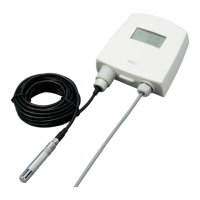User’s Guide ______________________________________________________________________
118 _________________________________________________________________ M211840EN-C
The checksum to be typed in the query depends on the device identifier
characters and can be asked from the WXT530 Series, see example
below.
Example:
Typing the command $--WIQ,XDRxxx<cr><lf> (xxx arbitrary
characters) the transmitter responds
$WITXT,01,01,08,Use chksum 2D*72<cr><lf>
indicating that 2D is the correct checksum for the $--WIQ,XDR
command.
If there are several distinct measurements of the same parameter
(according to the transducer table below), they are assigned different
transducer ids.
For example, minimum, average and maximum wind speed are
measurements of the same parameter (wind speed) so if all three are
configured to be shown in the XDR message, they get transducer ids A,
A+1 and A+2, respectively, where A is the transmitter address aXU,A.
The same applies for the wind direction. Temperature, internal
temperature and heating temperature have the same unit, thus they are
assigned with transducer ids A, A+1 and A+2, respectively.
Accumulation, duration and intensity for rainfall and hails are
measurements of the same parameters so they get transducer ids A for
rainfall and A+1 for hails. Rain and hail peak intensities are assigned
with transducer ids A+2 and A+3, respectively.
For example, for a transmitter with device address 0 the transducer ids
of all the measurement parameters are as follows:
hh = Two-character checksum for the response
<cr><lf> = Response terminator
1. NMEA-format transmits only numbers as transducer ids. If the transmitter
address is given as a letter, it is shown as a number (0 ... 9, A = 10,
B = 11, a = 36, b = 37 etc.)

